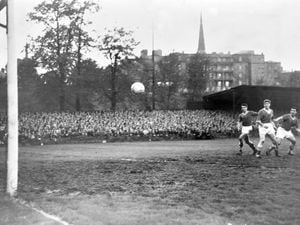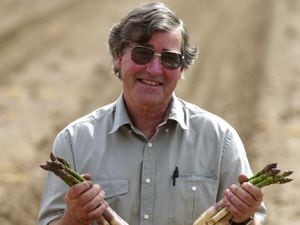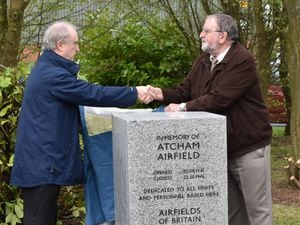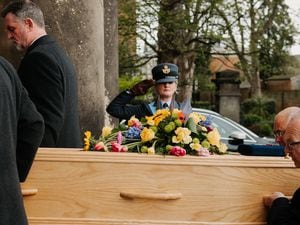Postcard king who returned to his roots
When the end came on Christmas Eve, 1941, at the age of 86, postcard king Reginald Phillimore returned to his roots to be buried in the family vault in Bridgnorth.
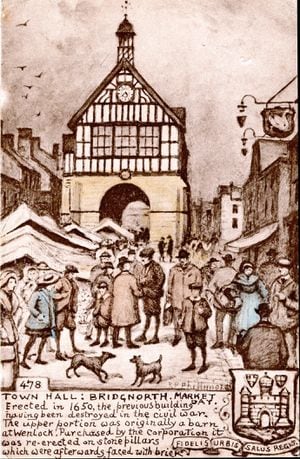
He had ridden the wave of postcard popularity in the early 20th century but, when they began to go out of fashion, times were less good, although he kept his Bridgnorth property.
"Between 1904 and 1914, he was one of Britain’s postcard kingpins, admired and collected by many, and easily able to make a living for himself," said his biographer, Dr Jan Bondeson, who has written a book about him and his work called Phillimore's Edinburgh, which has been published by Amberley Publishing.
Phillimore, he says, is best known for his many postcards depicting various parts of Edinburgh, a city he knew very well, and East Lothian.
"He regularly visited his property in Bridgnorth, however, and a number of his cards were inspired by the local scenery of those parts – the castle ruins, the High Rock, the Town Hall, Bishop Percy’s House, the North Gate and the Stoneway Steps."
Born in 1855, he was one of five children of the superintendent of a lunatic asylum near Nottingham.
His Bridgnorth links came through his mother. According to his obituary, she was a native of the town, and was born at Bridgen Hall. Her father, a Mr Watts, had owned a drapers shop in the High Street.
She had married Dr William Phillimore at St Mary's Church in Bridgnorth in 1851, and they then went to Nottingham.
The obituary went on to say that she inherited Bridgen Hall and Den Farm, Chelmarsh, from her father. Reginald inherited the properties on his parents' death, and remained owner of Bridgen Hall until his own death, although Den Farm was sold.
However Jan does not think this part of the obituary is right.
"They seem to have thought the Bridgnorth farm came to Phillimore from his father, but I have seen old man Phillimore's will and he only left Reginald some worthless trinkets. Instead there is reason to believe that he was left the Bridgnorth farm and land by his capitalist aunts who all died off in 1900-1901," he said.
Reginald, whose full name was Reginald Phillimore Phillimore, had shown promise as an artist as a schoolboy and became an assistant schoolmaster, but Jan says he was a shy retiring man who didn't like the boisterous pupils, and wanted to concentrate on his art.
"The turning point came when three aunts of his, who had taught in North Berwick, East Lothian, all died in 1900 and 1901, leaving their house, school and money to Reginald. He also inherited a farm and some land in Bridgnorth.
"Reginald Phillimore did not want to live in idleness, and anyway there was a need to accumulate money and provide for his old age. At an early stage after he had come to North Berwick in East Lothian, Scotland, he began to produce picture postcards from his own drawings.
"The start of the picture postcard boom in Britain coincided with Phillimore’s move to North Berwick, and the quaint East Lothian surroundings inspired him to become a full-time postcard artist.
"He employed a teenage North Berwick schoolgirl, Mary Pearson, to do the delicate colouring. Since she liked some variation, no two hand-coloured cards are the same."
Most of Reginald's early postcards were conventional, but as he grew more experienced he invented a style of his own, with often several smaller vignettes and brief explanatory text describing the history of the building or street depicted.
"This proved a both novel and felicitous manner to produce a postcard, and Reginald’s business flourished as a result."
He sold his postcards for a halfpenny each to a network of dealers.
The postcard boom ended in the years after the Great War, and his cards went out of fashion, but although English shops stopped stocking them, he remained well represented in Scotland in the 1920s, particularly in his Edinburgh and East Lothian strongholds.
"Although in straitened circumstances, he kept his property in Bridgnorth until the end. Reginald Phillimore’s health, both mental and physical, had always been very good, but in 1936 he suffered a serious stroke, becoming paralysed in the right side of his body and experiencing an impairment of his speech.
"He seemed to be close to death, but his iron constitution allowed him to rally, although he had become crippled for life. On sunny days the loyal Mary Pearson wheeled him about in an invalid chair, and he liked to sit in the small garden to the rear of his house."
He died at Rockstowes, his home in North Berwick. A bachelor, the principal mourner at his Bridgnorth interment was a nephew, Mr W H Phillimore, who came from Stirlingshire.


